Dirk Vander Kooij uses a robotic arm to print vases from scrap plastic
Dutch designer Dirk Vander Kooij made these vessels from scraps of plastic, melted down and built up in layers by a robotic arm.
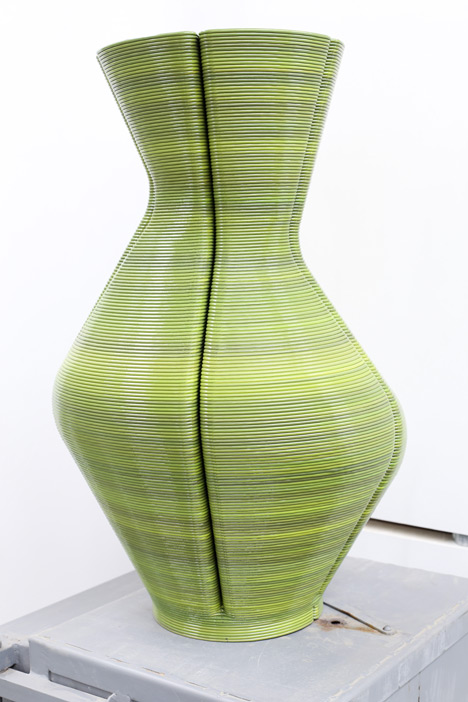
Entitled Changing Vases, the objects are created using leftover plastic from the Dirk Vander Kooij's famous Endless Chair, which is itself made of recycled refrigerators.
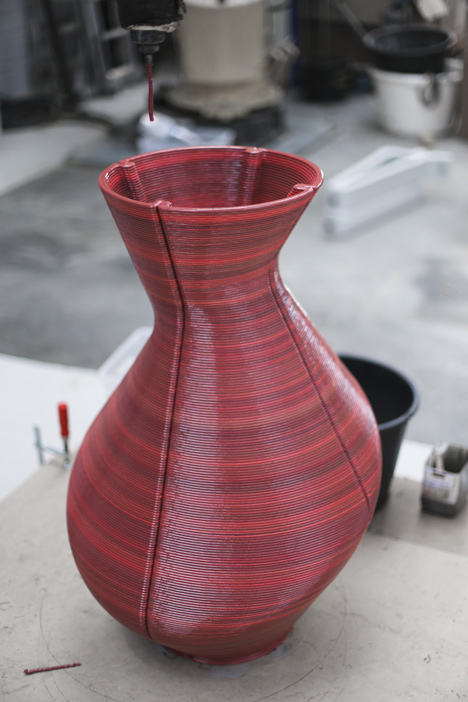
"We were already using waste material for our products, but there are always little bits of extruded material left over so we wanted to use those too," the designer told Dezeen.
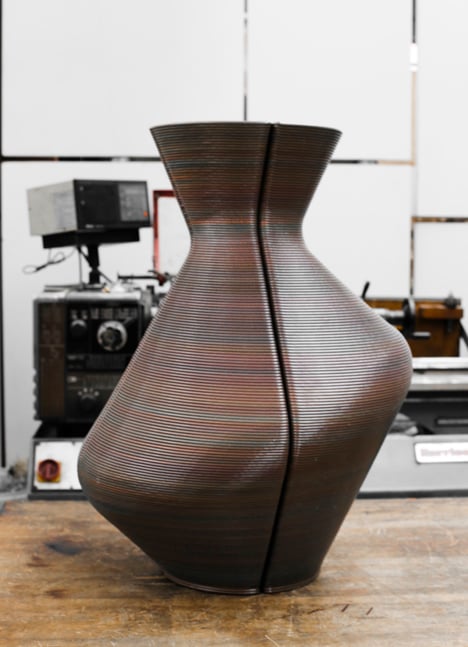
The vases are made in the same way as the chair, by building up layers of melted polystyrene extruded from a nozzle connected to a robotic arm.
The colour of each vase is determined by the material put into the hopper and can change gradually from one layer to the next. "Because we use our waste bin as material, each vase is uniquely coloured," explained the designer.
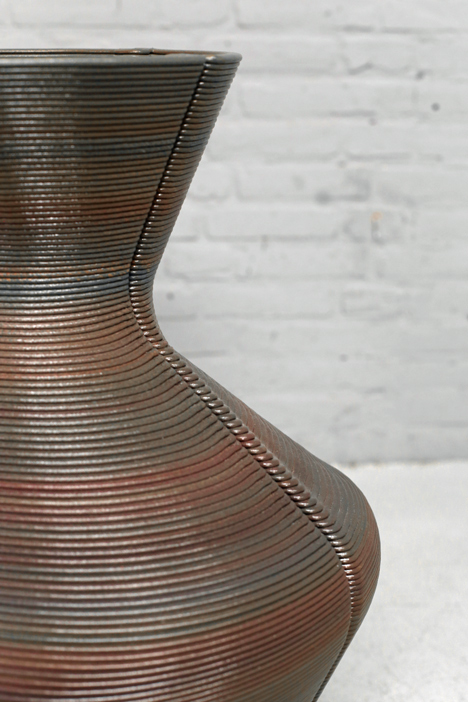
Each vase is a deliberately distorted take on the profile of a traditional vase. The result is a unique perspective that changes depending on where the viewer stands.
The vases come in two sizes: 40 by 49 centimetres or 50 by 66 centimetres. The former weighs five kilograms, the latter seven.
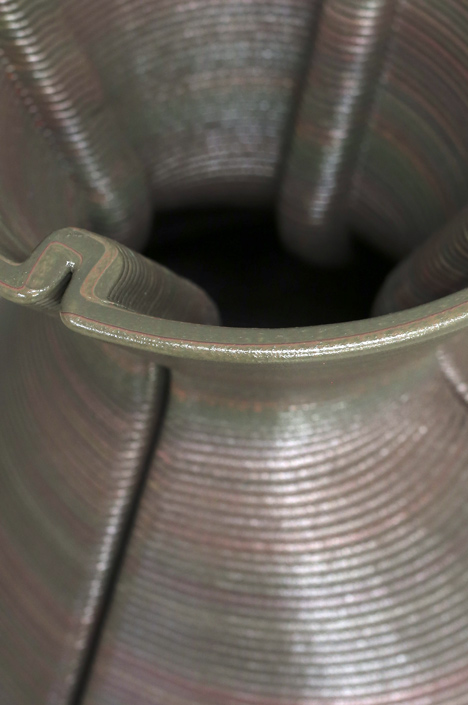
The Changing Vase forms part of Kooij’s latest series, called New Babylon. All of the items utilise the same process Kooij developed while studying at The Design Academy Eindhoven.
Sourcing waste material from fridge recycling centres in the Netherlands, fragments of polystyrene are melted into a consistent thread which can be printed into different shapes without the used of moulds, instead extruding them layer by layer.
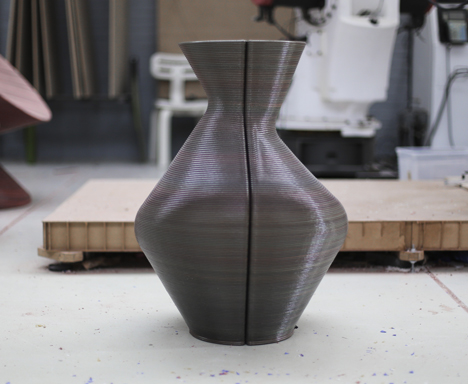
Kooij has used the technique to print rocking chairs, dining chairs, tables, lights and even coat hangers. His Endless Chair was one of the winners at the 2011 DMY Awards in Berlin.
Photography is courtesy of Nadine Stijns.